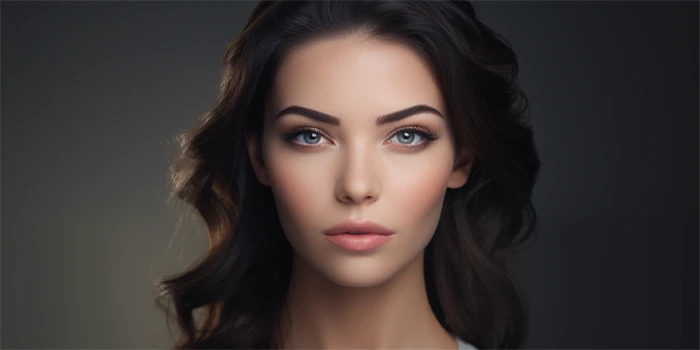In recent years, there has been much debate and speculation surrounding the condition known as Asian ptosis. Ptosis refers to the drooping of the upper eyelid, and it is believed by many to be more prevalent among individuals of Asian descent. However, like many medical conditions, there are often misconceptions and myths surrounding the topic. In this article, we will explore the truth behind Asian ptosis, separating fact from fiction.

What is Asian Ptosis?
Asian ptosis, also known as Asian eyelid syndrome or double eyelid, is a condition characterized by a fold in the upper eyelid that creates a crease. This fold differs from the eyelid structure typically seen in individuals of Asian descent, where a single eyelid without a crease is more common. The presence of this crease is often desired for cosmetic reasons, leading to the popularity of procedures such as blepharoplasty or double eyelid surgery among Asian populations.
The Genetic Factor
One common myth surrounding Asian ptosis is that it is purely a genetic condition. While genetics can play a role in the development of the condition, it is not solely determined by one's genes. Other factors such as age, trauma, and medical conditions can also contribute to the drooping of the upper eyelid.
Asian individuals are not inherently predisposed to developing ptosis solely based on their ethnicity. It is important to remember that everyone's anatomy is unique, and there will always be variations within any ethnic group.
The Role of Age
Another misconception regarding Asian ptosis is that it is primarily a condition of older individuals. While ptosis can occur as a result of aging and the weakening of the muscles, it is not exclusive to older age groups.
In fact, ptosis can affect individuals of all ages, including young children. This can be caused by congenital factors or other underlying medical conditions. It is crucial to understand that Asian ptosis is not limited to a specific age group or generation.
The Cultural Influence
One prevalent myth surrounding Asian ptosis is that it is solely driven by cultural influences and a desire to conform to Western beauty standards. While cultural influences may play a role in the popularity of eyelid surgery among Asian individuals, it is essential to recognize that Asian ptosis is a legitimate medical condition.
It is essential to avoid generalizations and assumptions about individuals seeking cosmetic procedures, as each person's journey is unique and personal to them. It is important to provide a supportive and understanding environment for those considering or undergoing treatment for Asian ptosis.
Treatment Options
There are various treatment options available for Asian ptosis, depending on the severity of the condition and the desired outcome. Non-surgical options include the use of eyelid tapes or glues to create the appearance of a double eyelid fold.
For individuals seeking a more permanent solution, there is the option of undergoing blepharoplasty or double eyelid surgery. This procedure involves creating a crease in the upper eyelid through the removal of excess skin or manipulation of the underlying structures.
Possible Complications
Like any surgical procedure, there are potential risks and complications associated with blepharoplasty or double eyelid surgery. It is crucial for individuals considering these procedures to consult with a qualified and experienced surgeon to discuss the potential risks and benefits.
Some possible complications include infection, scarring, asymmetry, or a change in the shape of the eyelids. It is vital to have realistic expectations and to thoroughly research and understand the risks involved before proceeding with any surgical intervention.
The Emotional Impact
Asian ptosis can have an emotional impact on individuals, affecting their self-esteem and confidence. It is crucial to approach the topic with sensitivity and empathy, understanding that everyone's experience is unique.
Support groups and resources are available for individuals seeking emotional support or guidance throughout their journey with Asian ptosis. It is important to foster a community that embraces diverse beauty standards and promotes self-acceptance.
FAQs:
Q: Can Asian ptosis be prevented?
A: While there is no guaranteed way to prevent ptosis, maintaining overall eye health and avoiding trauma to the eyelids can help reduce the risk.
Q: Is double eyelid surgery painful?
A: The level of discomfort experienced during and after double eyelid surgery can vary. However, surgeons typically administer local anesthesia to minimize any pain or discomfort during the procedure.
Q: Will double eyelid surgery result in a Westernized appearance?
A: Double eyelid surgery aims to create a crease in the upper eyelid, but the outcome will vary depending on the individual's desired result. The goal is not to erase one's cultural or ethnic identity, but rather to enhance their natural features.
Q: Are there any non-surgical alternatives for Asian ptosis?
A: Yes, non-surgical alternatives such as eyelid tapes or glues can temporarily create the appearance of a double eyelid fold. However, these methods are not permanent solutions.
Q: Is Asian ptosis a common condition?
A: Asian ptosis is relatively common, but it is important to remember that not all individuals of Asian descent have this condition. The presence or absence of a double eyelid fold varies among different individuals and ethnicities.



